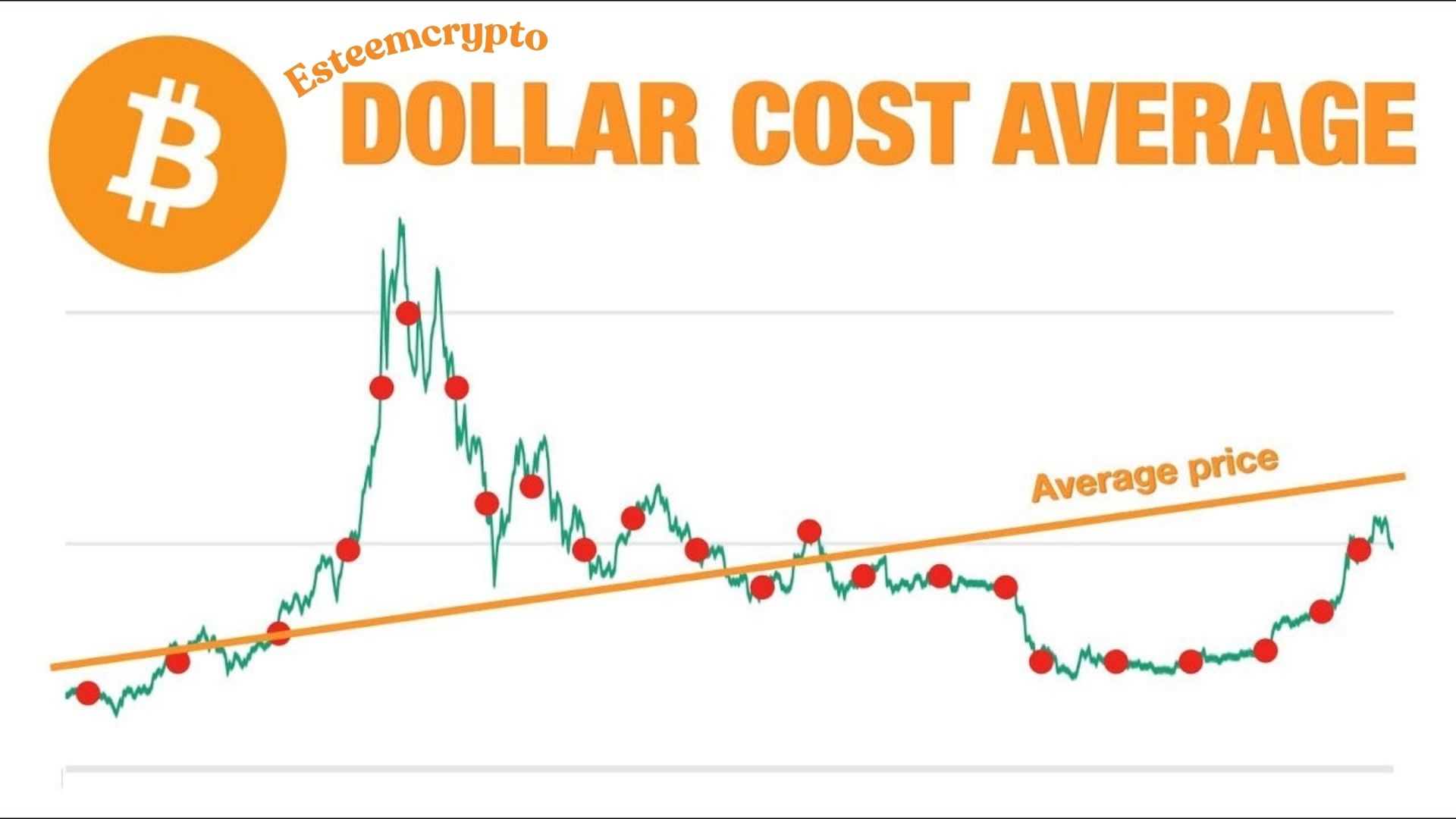Cryptocurrency Trading Strategies: A Beginner’s Guide By Esteemcrypto

Cryptocurrency Trading Strategies. There has been a marked increase in the number of cryptocurrency holdings held by financial institutions during the past few years. Cryptocurrencies are the initial digital assets that managers have included in their portfolios. They are unique in their own right but have many traits and more conventional assets. Cryptocurrency trading is purchasing and selling cryptocurrencies to make a profit. To define cryptocurrency trading, we need to look at three things: the trading strategy, the item, and the operating mode.
The way the Bitcoin market functions is dependent on the type of transaction. In the case of bitcoin contract for differences (CFD) trading, for example, the parties agree that, upon position closure, the buyer will pay the seller the difference in their respective positions. The term “cryptocurrency trading” describes the activity in which digital currencies are traded.
An investor-formulated trading strategy is an algorithm specifying a set of predetermined regulations for purchasing and selling digital assets on cryptocurrency exchanges. Day trading, futures trading, high-frequency trading (HFT), dollar-cost averaging, and scalping are some of the crypto trading tactics covered in this article. Esteemcrypto also go over the benefits and drawbacks of crypto trading.
Crypto Trading Strategies
Using a sound trading strategy can lessen the impact of financial risk. It prevents you from making hasty and financially disastrous decisions. To get a feel for the ups and downs of the market, novice traders might even want to look into trading on the Binance Futures testnet. Here are some of the common strategies that are popular among crypto traders:
Day trading
One tactic in cryptocurrency day trading is to join and leave a position during the same trading day, during the crypto trading hours. Because most deals are initiated and closed inside a single trading day, this type of trading is also called intraday trading. Can you make $64,097 trading Bitcoins in a day? You could say that trading Bitcoin today is like playing with the market’s volatility.
Day trading cryptocurrencies aim to profit from even the smallest price fluctuations. The intrinsic volatility of the cryptocurrency industry makes day trading in the market a potentially rewarding endeavour. Technical analysis is a tool that day traders use to develop trading strategies. However, this approach is dangerous, takes a lot of time, and only suits experienced traders.
HODL (buy-and-hold)
A term coined from a misspelling of “hold,” “HODLing” describes an investing strategy whereby cryptocurrency holders hold onto their holdings for an extended period. Because of this, investors have a better chance of making money when the asset’s value increases.
HODLing is a strategy that allows investors to benefit from the growth of their investments over a lengthy period. Since the HODL strategy does not expose investors to short-term volatility, they can profit from it because they do not have to worry about selling low and buying high. The relative youth of cryptocurrencies makes them vulnerable to fraud and money laundering more than established commodities or fiat currency. Digital assets may lose value if some nations refuse to recognize cryptocurrency.
Crypto futures trading

An essential component of crypto futures trading is committing to purchasing and selling a specific quantity of underlying cryptocurrency (such as Bitcoin) at a future price and on a particular date and time. You can participate in futures trading techniques for a variety of cryptocurrencies without really owning any of them. Cryptocurrency holders might use futures to hedge against potential losses caused by price swings. So, how exactly can one trade future contracts for cryptocurrency?
Arbitrage trading
To make money trading cryptocurrencies like Bitcoin, traders look for arbitrage opportunities. Traders can engage in arbitrage by buying cryptocurrencies in one market and selling them in another. The spread is the disparity between the prices of buying and selling. Because of the discrepancy between trading volume and liquidity, traders can potentially make a profit. They seize this chance by creating accounts on exchanges where the price difference between the cryptocurrencies they are trading is substantial.
The downside is that traders have to pay the same fees twice for deposits, withdrawals, and trading, which cuts into their profit margin. As indicated before, you won’t be able to take advantage of the arbitrage chance if you fail to notice the price difference between the two exchanges.
High-frequency trading
One component of high-frequency trading (HFT) is the development of trading bots and algorithms to facilitate the rapid acquisition and sale of cryptocurrency. Building such bots requires an expert level of computer science and mathematics knowledge and an in-depth understanding of complex market principles. Therefore, it is not a good fit for novice traders but better suited for pros.
The four high-frequency trading tactics are market-making, momentum trading, liquidity detection, and arbitrage. As mentioned, arbitrageurs seek price gaps between similar assets and capitalize on them on various exchanges. Because low latency often causes misalignments, HFTs might use latency arbitrage to their advantage. Quant traders use HFT, an algorithmic trading strategy, to exploit the bid-ask price gap and sell or purchase assets in microseconds by exploiting latency. Nevertheless, trading following momentum tactics allows one to act on anticipated reactions to the unpredictable crypto market, which can lead to short-term price discrepancies.
Liquidity detection systems look for other traders’ (usually institutional investors’) market activity to identify liquidity. In addition, they primarily aim to profit from the market activity of other traders. Keep in mind, though, that algorithms can respond instantly to changes in the market. Consequently, algorithms may cut off trade briefly or dramatically widen their bid-ask spreads in highly turbulent markets, reducing liquidity and heightening volatility.
Dollar-cost averaging (DCA)

By investing a predetermined sum at regular periods in relatively modest increments, traders can benefit from market advances without exposing their assets to market risk using the DCA technique. To begin using the dollar-cost averaging approach, decide how much money you want to put into your chosen cryptocurrency and then set a timer to invest it. If you set a goal and stick to it, you can achieve it no matter what happens to the market.
With dollar-cost averaging, you can take advantage of market peaks and valleys. In addition, DCA makes it possible to invest in your chosen cryptocurrency gradually rather than all at once, protecting you from the wild swings in value that might occur when investing in a large sum. Trading your cryptocurrency assets will cost you extra because it is a long-term strategy. Hence, before implementing any trading method, complete your study.
Scalping
For financial gain, “scalp traders” take advantage of gaps in the market. On the other hand, raising trade volumes is critical to the scalping trading strategy. Within a day, scalpers decide whether to enter or exit based on previous trends and volume levels. Skilled traders know that there is a chance of losing money when trading. Therefore,e they pay close attention to margin requirements and other necessary regulations. Because it is easy to anticipate when to join or leave a highly liquid market, scalpers tend to favor them. Traders with massive positions, often called “whales,” frequently employ this tactic.
Range trading
One active investing strategy is range trading, in which an investor buys or sells cryptocurrency within a predetermined price range for a limited time. If you think Bitcoin will rise to $400,000 in the following weeks, and it’s presently selling at $35,000, you may see prices anywhere from $35,000 to $400,000. Buying bitcoin at $35,000 and selling it when its price reaches $400,000 is one strategy for range trading. You can keep trying this strategy if you think Bitcoin will move outside of this range.
Index investing
Investors can put their money into a cryptocurrency index fund, holding a portfolio of several cryptocurrencies. One way to avoid taking a chance on any one coin is to invest in an index instead. You can do this by buying Bitcoin Futures or spot ETFs, for example, or by investing in the DeFi Pulse Index. Without ever having to leave the underlying protocols, index holders can cast votes on governance proposals. The idea of intelligent indexes that preserve direct token ownership’s value is a part of this.
Fund managers don’t need a big staff of research specialists to help them choose the finest crypto assets for an index fund because the fund mimics its underlying benchmark. A diversified portfolio follows a strategy comparable to an index in terms of investment percentage. However, investors risk losing money when trading index funds, unlike government bonds or fiat/cash.
Swing trading
During a week or month, swing traders experiment with the market’s volatility. They develop plans by analysing both technical and fundamental trading indicators. Swing traders have more time to monitor the price of a cryptocurrency and make investing decisions based on that information. However, novices aren’t always suited for swing trading because of the frequent need for quick assessments and execution. Trading is time-consuming and complicated since traders must be active daily and analyse the market.
On the other hand, automated technologies like crypto bots and signals can speed up the execution of swing trades. For example, when conditions are satisfied, trading robots automatically purchase and sell assets based on their market analysis.
Trend trading
Holding positions for several months to profit from directional indications is known as trend or position trading. When trend traders believe prices will continue to fall, they often take short bets. Nevertheless, if they anticipate a rise in the market, they invest for the long run.
If they want their investing strategy to be more successful, they need to look for trend reversals using indicators like stochastic oscillators, moving average convergence divergence, and moving averages. Trend trading is a good fit for novice traders because they don’t yet feel comfortable with the financial risks associated with cryptocurrency investments. No matter how much experience you have trading, it would be best to always research before putting any money on the line.
Advantages of Trading Cryptocurrencies

There are many benefits of trading cryptocurrency, as explained below:
Drastic price fluctuations
Because of their high volatility, cryptocurrencies are prone to attracting speculative attention and investors. For instance, intraday price changes can give traders excellent profit, but they also carry a higher risk, such as a sudden downward price trend leading to losses.
Near anonymity
Online purchases made with cryptocurrency do not necessitate disclosing sensitive personal information. Cryptocurrencies may also offer some privacy advantages to users, which is a plus in light of the increasing worries about privacy and identity theft. Every exchange has unique Know Your Customer (KYC) procedures to identify its users and clients. By implementing a Know Your Customer (KYC) procedure, exchanges help financial institutions reduce risk while protecting users’ anonymity.
Programmable smart capabilities
Other perks to holders of some cryptocurrencies include restricted ownership and voting rights. A cryptocurrency portfolio may consist of a partial interest in physical things like artwork or real estate.
24-hour market
Does the crypto market close? No, it doesn’t because it is a decentralized market. The cryptocurrency market is open 24 hours a day, seven days a week, and is not physically transacted from a single location. Instead, individuals can conduct cryptocurrency transactions in various locations globally.
Peer-to-peer transactions
One of the most significant advantages of cryptocurrencies is that they do not require the involvement of a financial institution as an intermediary, which can lower transaction costs. Furthermore, people wary of established systems may find this feature appealing.
Disadvantages of Trading Cryptocurrencies

Despite the above benefits, the crypto space has risks and disadvantages. Some of these are explained below:
Cybersecurity problems
Cryptocurrencies, like digital technology, are vulnerable to cybersecurity breaches and can fall into the hands of hackers, leading to crypto heists. Mitigating this problem necessitates constant security infrastructure maintenance and advanced cybersecurity measures beyond traditional banking.
Scalability concerns
The number of transactions and transaction speed could not compete with traditional currency trading before the tremendous increase in technical infrastructure. For example, in March 2020, scalability concerns caused a multi-day trading delay. The backlog hurt traders who wanted to transfer cryptocurrency from their wallets to exchanges.
Regulatory challenges
There is currently no legal structure to offer asset protection, so crypto investors have little protection in the market. However, in the United States, certain exchanges comply with regulations by federal and state authorities.
Best Way to Trade Crypto
There is no right or wrong technique when trading cryptocurrency. Prioritizing your financial or investing goals would be best before searching for the top Bitcoin exchange for day trading or software to trade cryptocurrency. You should also know how much risk you are ready to take and which asset classes you will include in your investment portfolio. In addition, settle on trading indicators that you’re comfortable with and learn the fundamentals of cryptocurrency trading, including the many kinds of orders.



